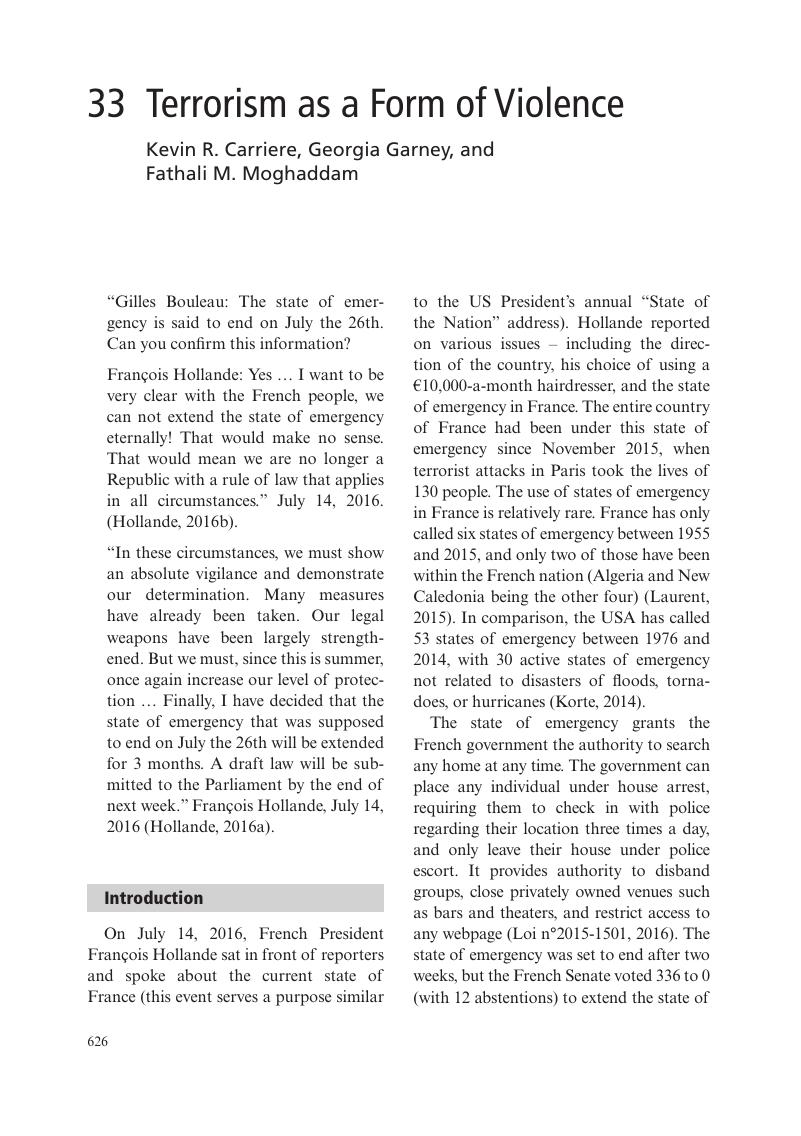Book contents
- The Cambridge Handbook of Violent Behavior and Aggression
- The Cambridge Handbook of Violent Behavior and Aggression
- Copyright page
- Dedication
- Contents
- Contributors
- Introduction: The Cambridge Handbook of Violent Behavior and Aggression
- Part I Introduction and Overview
- Part II Biosocial Foundations of Violence and Aggression
- Part III Individual and Interpersonal Factors for Violence and Aggression
- Part IV Contextual Factors for Violence and Aggression
- 27 Youth Gangs and Violent Behavior
- 28 Social Networks and Violence
- 29 The Contagion of Violence
- 30 School Violence
- 31 Violence and Culture in the United States
- 32 Violence Prevention in a Global Context: Progress and Priorities for Moving Forward
- 33 Terrorism as a Form of Violence
- 34 Psychopharmacology of Violence
- 35 Individual, Family, Neighborhood, and Regional Poverty/Socioeconomic Status and Exposure to Violence in the Lives of Children and Adolescents: Considering the Global North and South
- 36 Firearms and Violence
- Part V Looking Toward the Future
- Index
- References
33 - Terrorism as a Form of Violence
from Part IV - Contextual Factors for Violence and Aggression
Published online by Cambridge University Press: 30 July 2018
- The Cambridge Handbook of Violent Behavior and Aggression
- The Cambridge Handbook of Violent Behavior and Aggression
- Copyright page
- Dedication
- Contents
- Contributors
- Introduction: The Cambridge Handbook of Violent Behavior and Aggression
- Part I Introduction and Overview
- Part II Biosocial Foundations of Violence and Aggression
- Part III Individual and Interpersonal Factors for Violence and Aggression
- Part IV Contextual Factors for Violence and Aggression
- 27 Youth Gangs and Violent Behavior
- 28 Social Networks and Violence
- 29 The Contagion of Violence
- 30 School Violence
- 31 Violence and Culture in the United States
- 32 Violence Prevention in a Global Context: Progress and Priorities for Moving Forward
- 33 Terrorism as a Form of Violence
- 34 Psychopharmacology of Violence
- 35 Individual, Family, Neighborhood, and Regional Poverty/Socioeconomic Status and Exposure to Violence in the Lives of Children and Adolescents: Considering the Global North and South
- 36 Firearms and Violence
- Part V Looking Toward the Future
- Index
- References
Summary

- Type
- Chapter
- Information
- The Cambridge Handbook of Violent Behavior and Aggression , pp. 626 - 644Publisher: Cambridge University PressPrint publication year: 2018
References
- 5
- Cited by

